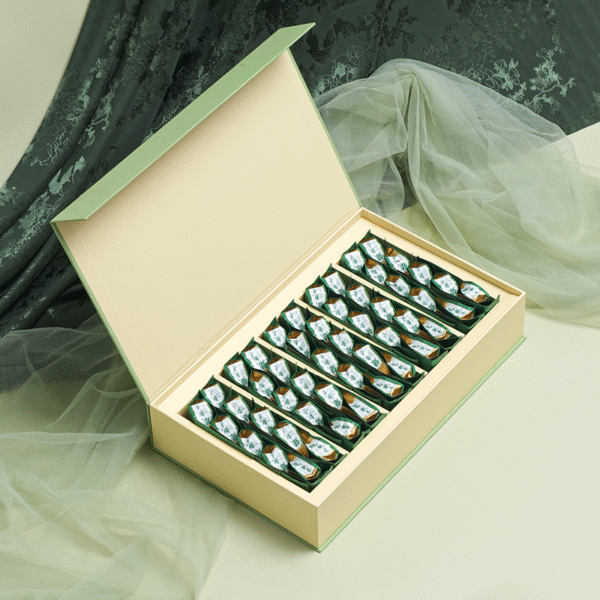
# First Grade Longjing Tea vs. Biluochun Green Tea: A Comparison
Introduction
When it comes to premium Chinese green teas, two varieties stand out among connoisseurs: First Grade Longjing Tea (also known as Dragon Well) and Biluochun Green Tea. Both have rich histories, unique production methods, and distinct flavor profiles that make them favorites among tea enthusiasts worldwide.
Origins and History
Longjing Tea
First Grade Longjing Tea originates from Hangzhou, Zhejiang province, with a history dating back over 1,200 years. The tea gained imperial recognition during the Qing Dynasty and remains one of China’s most celebrated teas today.
Biluochun Tea
Biluochun, meaning “Green Snail Spring,” comes from Dongting Mountain in Jiangsu province. Its history is slightly shorter, dating to the Ming Dynasty (14th-17th century), but it quickly gained fame for its delicate appearance and floral aroma.
Appearance and Processing
Longjing Characteristics
First Grade Longjing leaves are flat and smooth with a distinctive jade green color. The tea is pan-fired by hand, giving it a slightly toasted character while preserving its fresh, vegetal notes.
Biluochun Characteristics
Biluochun leaves are tightly curled, resembling small snails (hence the name). The processing involves careful rolling to maintain this unique shape, with minimal oxidation to preserve its delicate flavors.
Flavor Profile Comparison
Longjing Taste
First Grade Longjing offers a mellow, chestnut-like sweetness with subtle orchid notes. The aftertaste is clean and refreshing, with a lingering sweetness that characterizes high-quality Longjing.
Biluochun Taste
Biluochun presents a more floral profile, with pronounced fruity and floral aromas. The taste is lighter than Longjing but more complex, often described as having peach or apricot notes.
Brewing Methods
Longjing Brewing
Use water at 75-80°C (167-176°F) and steep for 1-2 minutes. High-quality Longjing can be reinfused 2-3 times, with each infusion revealing different flavor dimensions.
Biluochun Brewing
Biluochun requires slightly cooler water (70-75°C or 158-167°F) due to its delicate nature. The leaves unfurl beautifully, and the tea can typically be steeped 3-4 times.
Health Benefits
Both teas offer similar health benefits characteristic of green teas, including antioxidants and potential metabolism-boosting effects. However, some studies suggest Longjing may have slightly higher catechin content, while Biluochun’s unique processing may preserve different beneficial compounds.
Which to Choose?
The choice between First Grade Longjing and Biluochun comes down to personal preference. Longjing offers a more substantial, nutty flavor, while Biluochun provides a lighter, more aromatic experience. Many tea lovers enjoy both, selecting based on mood or occasion.
For those new to premium Chinese green teas, we recommend trying small quantities of both to appreciate their distinct characteristics before committing to larger purchases.